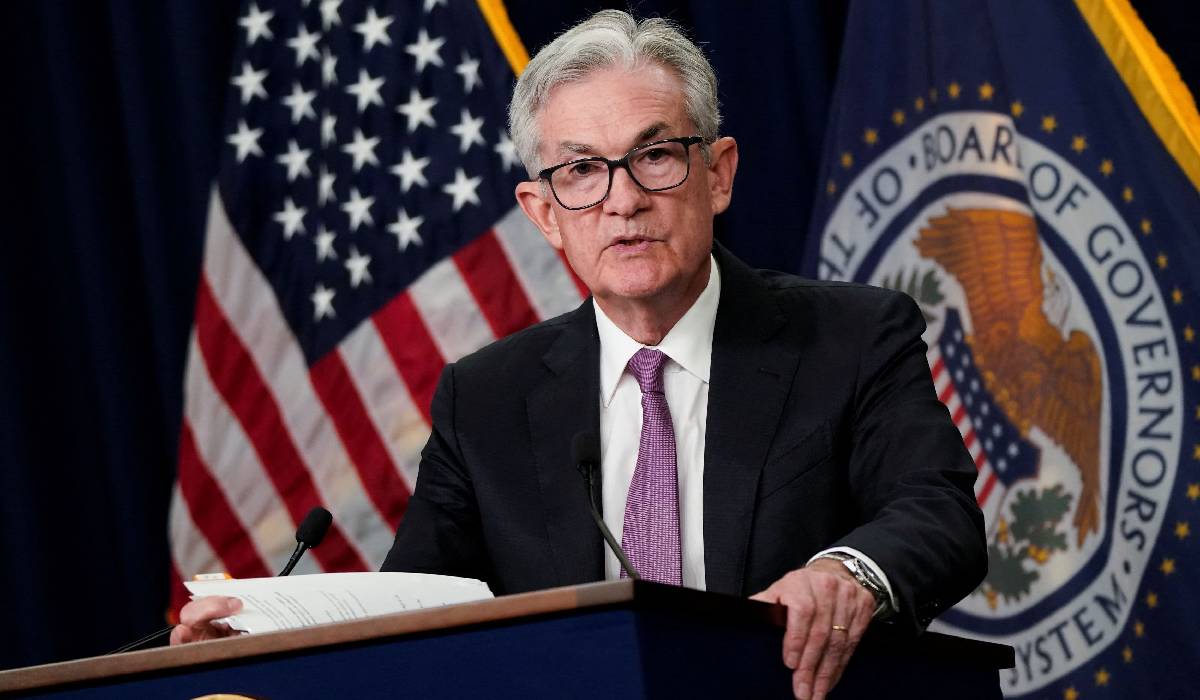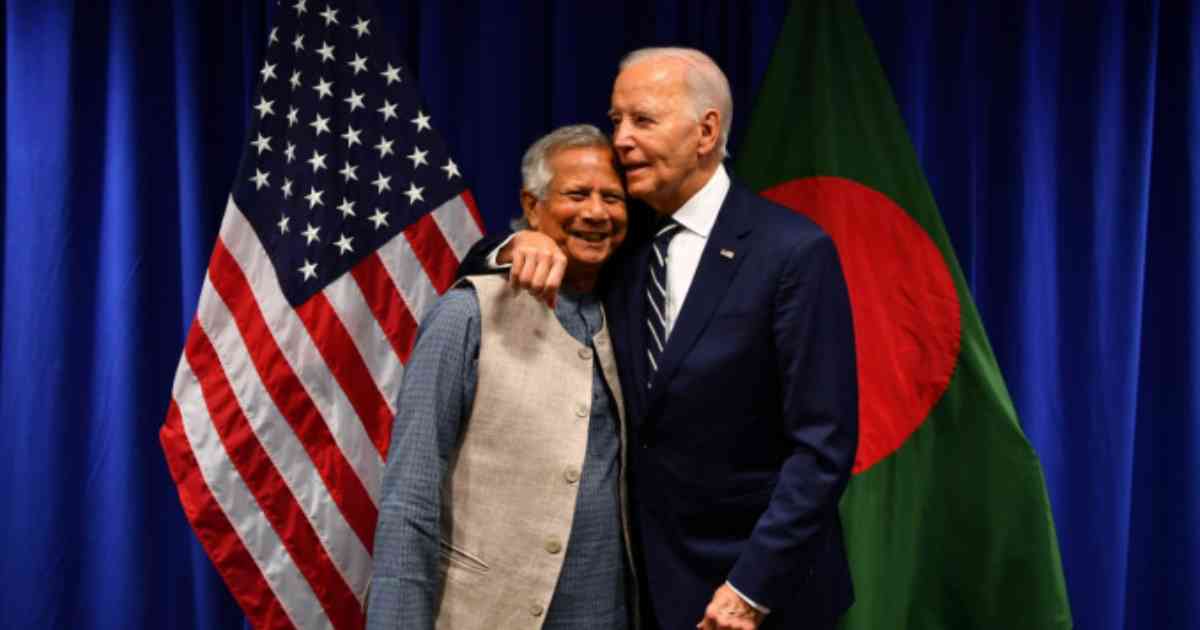World Biz
Interest rate likely to hike again in US

The Federal Reserve has seen delivering another huge interest-rate hike in 3 weeks’ time and ultimately increasing rates to 4.75pc-5pc by prior next year, if not further after a government report showed inflation remained stubbornly hot last month.
Traders of U.S. interest-rate futures piled into fresh bets on a more aggressive Fed, even pricing in a one-in-three chance that the Fed drives the policy rate above 5% next year, after a Labor Department report showed the consumer price index jumped 0.4pc in September from August. From a year prior, prices rose 8.2pc, far above the Fed’s 2pc target.
“Our policies have not really bitten as much as they need to for us to get to a better place,” Atlanta Fed President Raphael Bostic told the news media on Wednesday, 12 October, before the report.
The Fed has raised interest rates faster this year than any time since the early 1980s when inflation was even higher and so entrenched in day-to-day American life that it took pushing short-term borrowing costs — and the unemployment rate — into double digits before price pressures finally receded.
Policymakers hope to avoid anything like that this time around. But analysts say chances of skirting a rate-hike-induced recession are fading fast, particularly because of price pressures in categories such as shelter that tend be sticky, and ongoing labor market tightness that is feeding wage pressures.
Shortages in labor and in housing, wrote Jefferies’ economist Aneta Markowska, to put a “floor” for underlying inflation at around 4pc, “and we think breaking that floor will require substantial labor market weakness, which makes a recession unavoidable.”
Before the report, traders had all but priced in a fourth straight 75-basis-point hike at the close of the Fed’s Nov. 1-2 meeting. That is still the dominant view, though futures prices now also reflect about a one-in-10 chance of a full percentage-point rate hike next month. The Fed’s policy rate is currently 3pc-3.25pc.
By year-end, traders now expect the rate to reach 4.5pc-4.75p — the level Fed policymakers had just three weeks ago seen taking until next year to reach — and topping out around 4.85pc by March of next year.
Futures prices also reflect about a 35pc chance of rates rising above 5pc, validating the long-held view of some analysts who have argued the Fed will at least that puncture price pressures, and that unemployment, now 3.5pc, will likely shoot up as well.
“Broadly speaking, we see this as supporting our call for a terminal rate of 5pc to 5.25pc,” wrote LH Meyer economists, higher than Fed policymakers had themselves signaled just 3 weeks ago, “higher than markets have been pricing, and higher than markets are pricing even after this report.”
Fed policymakers have raised interest rates sharply this year, from near-zero just seven months ago. Most global central banks are also raising rates fast, and stock prices around the world have fallen as investors and economists expect growth to slow in response.
Despite those concerns, most policymakers are so far more worried about raising rates too little than doing too much and are intent on pushing rates higher until they see progress on inflation, which is eroding Americans’ purchasing power at a faster pace than at any time in 40 years.
The result, analysts fear, will be a Fed that goes too far, forcing it to reverse course late next year to offset what by then could be a full-blown recession.
“With the (Fed’s) backward-looking reaction function intensifying overtightening risks, we now expect the Fed to cut the funds rate by 75 (basis points) in the final three meetings of 2023,” Barclays economists wrote on Thursday.
Traders are pricing a smaller 30 basis point rate cut toward the end of 2023, rate-futures contracts traded at CME Group show.

World Biz
Global Leaders Convene in Guilin to Chart Future of Tourism

The 2025 UN Tourism/PATA Forum on Tourism Trends and Outlook, held from September 18-20, concluded in Guilin, China, bringing together leading figures from over 20 countries to address the industry’s most pressing challenges. Jointly hosted by the UN World Tourism Organisation (UN Tourism) and the Pacific Asia Travel Association (PATA), the three-day event centered on building a more resilient, sustainable, and “smart” tourism sector.

- Tourism Governance: Led by UN Tourism, this session featured policy insights and international cooperation models from countries including Slovenia, Indonesia, and Brazil.
- Tourism Resilience in the Asia-Pacific: Organized by PATA, this discussion included practical case studies from Nepal and Spain, providing real-world examples of how destinations are adapting to challenges.
- Tourism Talent Development: Hosted by The Hong Kong Polytechnic University, this pillar focused on cultivating a skilled workforce to meet the evolving demands of the industry.

A dedicated Guilin Session also explored innovations in the meetings, incentives, conferences, and exhibitions (MICE) sector, with contributions from Greece, South Korea, and China.
A major highlight of the forum was the global launch of UN Tourism’s latest World Tourism Barometer, which provided updated data on international travel flows and economic impacts. Keynote speeches from industry giants like TUI Group offered a deep dive into European tourism markets, while Alipay’s Fliggy showcased new models in digital tourism. These presentations were followed by panels on the future of smart tourism destinations and new methods for tourism economic measurement.

The forum’s opening ceremony on September 19 featured addresses from Liu Shijun of UN Tourism and the President of PATA, along with local leaders. Their insights, combined with valuable case studies from delegates and experts from countries like the Maldives and institutions such as South Korea’s Youngsan University, laid the groundwork for the “Guilin Solutions”—a set of recommendations designed to advance sustainable and intelligent tourism worldwide.
Beyond the formal sessions, delegates were given a first-hand look at Guilin’s efforts to become a world-class tourism destination. Visits to local cultural and tourism landmarks demonstrated how the city is integrating culture, technology, and sustainability into its tourism strategy. The forum not only reinforced Guilin’s position as a hub for international dialogue but also offered concrete steps for building a more resilient and innovative global tourism industry.
Economy
Biden Pledges US Support to Yunus-Led Interim Government in Historic Meeting

US President Joe Biden has expressed his nation’s full backing for Bangladesh and the interim government led by Muhammad Yunus during a bilateral meeting held on the sidelines of the United Nations General Assembly (UNGA) in New York. This marks the first time in Bangladesh’s history that a US president has met with the country’s head of government at a UNGA session, as confirmed by a statement from the Chief Adviser’s Office.
In this unprecedented encounter, Chief Adviser Prof Yunus briefed President Biden on the significant sacrifices made by students who fought against the previous government, leading to the opportunity to rebuild the country. Prof Yunus underscored the importance of succeeding in this national rebuilding effort, calling for US cooperation in the process.
President Biden praised the students’ dedication, stating that their sacrifice calls for further commitment from all, including the US. During the meeting, Prof Yunus presented Biden with a copy of The Art of Triumph, a book featuring wall paintings by students and young revolutionaries.
Prof Yunus, on his first visit to the US as head of Bangladesh’s government, is attending the 79th UNGA, which runs from September 19 to 30. The theme of this year’s debate is “Leaving no one behind: acting together for the advancement of peace, sustainable development, and human dignity for present and future generations.”
Rare Diplomatic Meeting Signals Strengthened US-Bangladesh Ties
Speaking on the significance of the meeting, Chief Adviser’s Press Secretary Shafiqul Alam highlighted the rarity of such an engagement, noting that the US and Bangladesh already enjoy strong relations. “This meeting elevates our relationship to a new level,” Alam stated, as reported by local media.
Observers suggest that the bilateral meeting, which is uncommon for US presidents during the UNGA, signals Washington’s intention to support Bangladesh through its transitional period. Dhaka is hopeful that the encounter will lead to a new strategic partnership that enhances cooperation on multiple fronts.
Yunus Receives Warm Reception from Global Leaders
Earlier in the day, Chief Adviser Muhammad Yunus was welcomed by several world leaders at a reception hosted by UN Secretary-General Antonio Guterres. Held at the North Delegate Lounge in the UN headquarters, the event served to greet the leaders participating in the 79th session of the UNGA.
During the reception, Yunus exchanged greetings with Brazilian President Luiz Inacio Lula da Silva, Mauritian President Prithvirajsingh Roopun, and UN High Commissioner for Human Rights Volker Turk, among others.
Yunus Meets Canadian Prime Minister Trudeau
On the sidelines of the UNGA, Chief Adviser Yunus also met with Canadian Prime Minister Justin Trudeau. The two leaders discussed ways to enhance Bangladesh-Canada relations, focusing on fostering freedom, institution-building, and youth development in Bangladesh.
Prime Minister Trudeau commended Prof Yunus for taking on the leadership role and reiterated Canada’s willingness to support Bangladesh in strengthening its institutions. Prof Yunus, in turn, praised Canada for its enduring friendship and requested increased visa allocations for Bangladeshi students.
The chief adviser also gifted Trudeau The Art of Triumph, further highlighting the contributions of young revolutionaries. In addition to Trudeau, Yunus is scheduled to meet with the managing director of the IMF, the Italian prime minister, and will speak at the Clinton Global Initiative and Friends of Bangladesh events.
World Biz
Environmental groups urge EU ‘high risk’ label for Sarawak

Environmental and rights groups urged the European Union Tuesday to label Malaysia’s Sarawak region “high risk” under controversial new anti-deforestation rules to be implemented from the end of December.
The EU’s deforestation regulation (EUDR) is due to come into force at the end of the year, although Germany and Brazil have recently joined a string of countries urging that implementation be delayed.
Environmentalists and rights groups have, however, called on the EU to move forward with the regulation.
It will bar imports of a vast range of goods — from coffee to cocoa, soy, timber, palm oil, cattle, printing paper and rubber — if they are produced on land that was deforested after December 2020.
It also requires exporters to assess the risk of rights violations associated with production of the commodity.
In a joint statement, a group of Malaysian and international organisations said Sarawak in Malaysian Borneo should be considered “high risk” under the new rules.
Such a designation would mean closer scrutiny of timber and palm oil imported from the region — an unwelcome prospect for Malaysia, which is already pushing back against EUDR.
The NGOs argue Sarawak’s government plans to convert hundreds of thousands of hectares of natural forest to timber plantations, and is granting companies operating leases in areas that have not been surveyed for protection purposes.
Earlier this year RimbaWatch, one of the signatory groups, warned that around 15 percent of Malaysia’s natural forest is at risk because of concessions granted to companies.
Tuesday’s statement also alleges routine violations of Indigenous land rights, including limits on the amount of land that can be legally recognised, and the unilateral revocation of existing land titles.
“Logging companies are still bulldozing Indigenous peoples’ forests in Sarawak without consultation or consent from communities, which should translate into a ‘high risk’ classification,” said Celine Lim, managing director of SAVE Rivers, an Indigenous organisation from Sarawak.
– Vocal opponents –
Sarawak’s forestry department, and Malaysia’s plantation and commodities ministry did not respond to AFP’s request for comment on the claims.
Malaysia and Indonesia have been among the most vocal opponents of EUDR, arguing domestic anti-deforestation standards should be sufficient, and warning the rules will disproportionately harm smallholder producers who cannot meet onerous documentation requirements.
Environmental and rights groups have pushed back against these claims, including at talks in Brussels earlier this month between EU, Indonesian and Malaysian officials.
“Calls from EU governments to delay enforcement of the law are a deplorable abdication of leadership in the face of a climate emergency,” said Luciana Tellez Chavez, senior
environment and human rights researcher at Human Rights Watch.


You must be logged in to post a comment Login